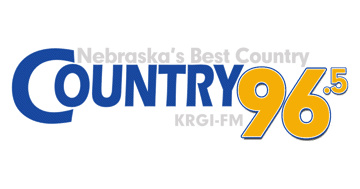Rural Mainstreet Economy Down Again for July

July 2024 Survey Results at-a-Glance:
· For an 11th straight month, the overall Rural Mainstreet Index sank below growth neutral according to bank CEOs in the region.
· After two straight months of below growth neutral for farmland prices, prices climbed above the 50.0 threshold.
· Farm equipment sales sank for the 12th straight month.
· On average, bankers expect farmland prices to drop by 3.4% over the next 12 months.
· Almost half of bank CEOs advocate for two Federal Reserve rate cuts for the rest of 2024.
· According to trade data from the International Trade Association, regional exports of agriculture goods and livestock for 2024 year-to-date were down by $198 million, or 3.6%, from the same period in 2023.
OMAHA, Neb. (July 18, 2024) — For an 11th straight month, the overall Rural Mainstreet Index (RMI) sank below growth neutral, according to the July survey of bank CEOs in rural areas of a 10-state region dependent on agriculture and/or energy.
Overall: The region’s overall reading for July sank to 41.3, its lowest reading since November 2023, and down from 41.7 in June. The index ranges between 0 and 100, with a reading of 50.0 representing growth neutral.
“Weak agriculture commodity prices, sinking agriculture equipment sales and declining farm exports pushed the overall reading below growth neutral for the 11th straight month,” said Ernie Goss, PhD, Jack A. MacAllister Chair in Regional Economics at Creighton University’s Heider College of Business.
Farming and ranching land prices: After falling below growth neutral for two straight months, farmland prices rose above the growth neutral threshold for July. The region’s farmland increased to 52.2 from June’s 49.9. “Only 8.7% of bank CEOs reported that farmland prices expanded from June levels,” said Goss.
Bankers were asked to project farmland prices for the next 12 months. “On average, bankers expect farmland prices to drop by 3.4% over the next 12 months,” said Goss.
According to trade data from the International Trade Association, regional exports of agriculture goods and livestock for 2024 year-to-date were down $198 million, or 3.6%, from the same period in 2023.
Farm equipment sales: The farm equipment sales index for July plummeted to 19.0, its lowest level in more than seven years, and down from June’s 31.8. “This is the 12th straight month that the index has fallen below growth neutral. Higher borrowing costs, tighter credit conditions and weak grain prices are having a negative impact on the purchases of farm equipment,” said Goss.
Banking: The July loan volume index stood at a very strong 67.4, but down from June’s 79.2. The checking deposit index increased to a weak 45.5 from June’s 34.8. The index for certificates of deposits and other savings instruments rose to 65.9 from 63.0 in June.
Bankers were asked their recommendations for Federal Reserve interest rate actions for the rest of 2024. Almost half, or 47.8%, advocate for two rate cuts of one-quarter of one percentage point, or one-half of one percentage point.
Don Reynolds, Chair of Regional Missouri Bank, in Marceline, Missouri, said that the nation is “at a major crossroads between risking the creation of a major recession by keeping interest rates in this range too long just to reach a target inflation number.” He argues that interest rates should be reduced 50-75 bps (½% - ¾%) .
Hiring: The new hiring index for July improved to 50.0 from June’s 47.7. In terms of economic risks for the region for the next 12 months, over half, or 52.2%, indicated a recession as the greatest risk, 26.0% named an upturn in inflation, 17.4% identified a debt crisis and 4.4% specified little or no economic risks for the next 12 months.
Confidence: Rural bankers remain very pessimistic about economic growth for their area over the next six months. The July confidence index slumped to 28.3, its lowest level in 2024, and down from June’s 29.2. “Weak agriculture commodity prices and farm exports, combined with downturns in farm equipment sales over the past several months, continued to constrain banker confidence,” said Goss.
Home and retail sales: After expanding to a strong 62.5 in June, the home sales index tumbled to July’s 33.3. Likewise, retail sales in the region, much like that for the nation, were very weak with a July retail index of 39.1, down from 41.3 in June. “High consumer debt, elevated interest rates and weaker farm income are cutting into retail sales for the Rural Mainstreet Economy,” said Goss.
The survey represents an early snapshot of the economy of rural agriculturally- and energy-dependent portions of the nation. The Rural Mainstreet Index is a unique index covering 10 regional states, focusing on approximately 200 rural communities with an average population of 1,300. The index provides the most current real-time analysis of the rural economy. Goss and Bill McQuillan, former Chairman of the Independent Community Banks of America, created the monthly economic survey and launched it in January 2006.
Below are the state reports:
Colorado: The state’s RMI for July dropped to 52.3 from June’s 56.7. The farmland and ranchland price index for July fell to 54.6 from 61.5 in June. The state’s new hiring index sank to 53.1 from 54.3 in June. According to trade data from the International Trade Association, exports of agriculture goods and livestock for 2024 year-to-date were up by $105.7 million, or 197.9%, from the same period in 2023.
Illinois: The state’s July RMI rose to 44.8 from June’s 42.7. The farmland price index climbed to 52.1 from 49.4 in June. The state’s new hiring index increased to 50.0 from 47.1 in June. According to trade data from the International Trade Association, exports of agriculture goods and livestock for 2024 year-to-date were down by $266.2 million, or 11.7%, from the same period in 2023.
Iowa: July’s RMI for the state increased to 49.5 from June’s 48.0. Iowa’s farmland price index for July improved to 53.4 from 50.9 in June. Iowa’s new hiring index for July rose to 51.6 from 49.0 in June. According to trade data from the International Trade Association, exports of agriculture goods and livestock for 2024 year-to-date were up by $11.3 million, or 1.5%, from the same period in 2023.
Kansas: The Kansas RMI for July declined to 34.4 from June’s 34.6. The state’s farmland price index increased to 49.1 from 47.1 in June. The new hiring index for Kansas increased to 46.3 from 44.3 in June. According to trade data from the International Trade Association, exports of agriculture goods and livestock for 2024 year-to-date were up by $1.0 million, or 0.2%, from the same period in 2023.
Minnesota: The July RMI for Minnesota rose to 50.7 from 50.2 in June. Minnesota’s farmland price index climbed to 53.7 from 51.5 in June. The new hiring index for July decreased to 52.1 from 55.3 in June. According to trade data from the International Trade Association, exports of agriculture goods and livestock for 2024 year-to-date were down by $73.3 million, or 14.0%, from the same period in 2023.
Missouri: The state’s July RMI fell to 51.2 from June’s 54.2. The farmland price index for July was unchanged from 53.2 in June. The state’s new hiring gauge climbed to 55.9 from June’s 52.1. According to trade data from the International Trade Association, exports of agriculture goods and livestock for 2024 year-to-date were down by $107 million, or 20.5%, from the same period in 2023.
Nebraska: The Nebraska RMI for July sank to 38.6 from 39.5 in June. The state’s farmland price index for July rose to 50.3 from 48.5 in June. Nebraska’s July new-hiring index sank to 47.8 from 48.2 in June. According to trade data from the International Trade Association, exports of agriculture goods and livestock for 2024 year-to-date were up by $115.1 million, or 36.0%, from the same period in 2023.
North Dakota: North Dakota’s RMI for July increased to 38.1 from 36.3 in June. The state’s farmland price index declined to 46.5 from 47.5 in June. The state’s new hiring index rose to 50.2 from 44.9 in June. According to trade data from the International Trade Association, exports of agriculture goods and livestock for 2024 year-to-date were up by $22.0 million, or 5.9%, from the same period in 2023.
South Dakota: The July RMI for South Dakota climbed to 45.7 from June’s 45.5. The state’s farmland price index increased to 52.3 from 50.1 in June. South Dakota’s July new hiring index improved to 50.3 from 48.1 in June. According to trade data from the International Trade Association, exports of agriculture goods and livestock for 2024 year-to-date were down by $5.6 million dollars, or 9.3%, from the same period in 2023.
Wyoming: The July RMI for Wyoming rose to 38.2 from 37.5 in June. The June farmland and ranchland price index climbed to 50.2 from 47.9 in June. Wyoming’s new hiring index increased to 47.7 from 45.3 in June. According to trade data from the International Trade Association, exports of agriculture goods and livestock for 2024 year-to-date were down by $1.6 million dollars, or 49.1%, from the same period in 2023.
